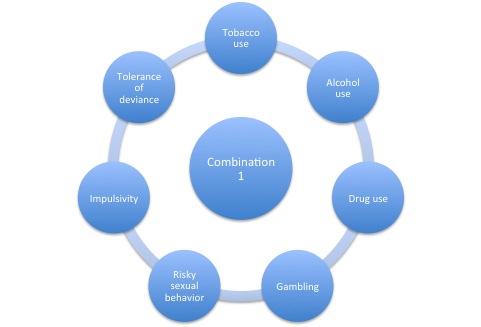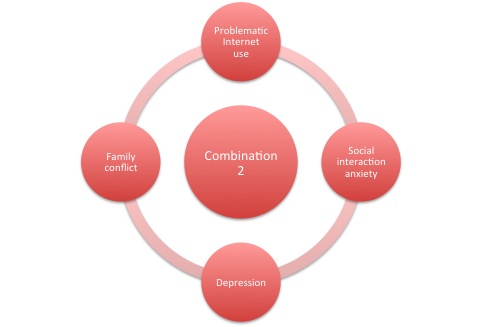Researchers and the public are increasingly concerned with Problematic Internet Use (PIU). However, professional consensus about PIU is far from certain. Some researchers view PIU as an “internalizing” disorder (Tonioni et al., 2012), in that people attempt to cope with social anxiety and other painful feelings by escaping to an online life. Others suggest that PIU is an “externalizing” disorder that results from high levels of impulsivity and other characteristics often associated with risky behaviors, such as illicit drug use. As part of our Special Series on Addiction and Technology, today’s STASH examines research that considers whether PIU is better conceptualized as an internalizing or externalizing disorder (De Leo & Wulfert, 2013).
Methods
- Participants were 498 college students (267 women) who completed a survey in exchange for course credit.
- The researchers measured PIU using a 26-item scale that assesses compulsion (e.g., “It is difficult for me to resist the urge to go back online even after logging off to complete other important tasks”), withdrawal (e.g., “I feel restless, moody, depressed, or irritable when I attempt to cut down, control or stop using the Internet”), and tolerance (e.g., “I often stay online longer than I originally intended”).
- The researchers measured the past-year frequency of drinking alcohol, smoking, using illicit and prescription drugs, gambling, and engaging in risky sexual behavior.
- The researchers also used standard scales to measure a number of personal and environmental characteristics (e.g., impulsivity, social interaction anxiety, depression, social support).
- The researchers computed correlations between the set of problem behaviors, including PIU, and the set of personal and environmental characteristics. More specifically, they used canonical correlation, a procedure for investigating the relationship between two sets of variables and identifying what is common between the two sets.
Results
- The researchers observed that two combinations of variables provided the most efficient description of all the data.
- Figures 1a and 1b illustrate these two combinations.
- The first combination represented externalizing behavior. It included drug use and other risky behaviors, impulsivity, and tolerance of deviance, but not PIU.
- The second combination represented internalizing behavior. It included PIU, social interaction anxiety, depression, and family conflict.
Figure. The first combination of variables. Click image to enlarge.
Figure. The second combination of variables. Click image to enlarge.
Limitations
- This was a correlational study that examined relationships among variables during a single point in time. As a result, we cannot conclude that any of these personality or environmental factors caused PIU or any other risky behaviors, or vice versa.
- The sample included college students, and we cannot conclude that the same pattern of relationships would emerge among other groups of people.
Conclusion
This study suggests that PIU might be an internalizing disorder because it relates more closely to depression, social interaction anxiety, and family conflict than to other risky behaviors, impulsivity, and tolerance of deviance. The authors suggest that socially anxious people could turn to the Internet as a low-risk way to engage in social interaction. Over time, those individuals might become dependent on the Internet and unable to fulfill “off-line” responsibilities. One’s potential for becoming dependent on the Internet might be greater if they have other risk factors such as depression and family conflict (Shaffer et al., 2004). Future studies that make use of longitudinal designs might be able to test these ideas.
— Heather Gray
What do you think? Please use the comment link below to provide feedback on this article.
References
De Leo, J. A. & Wulfert, E. (2013). Problematic Internet Use and other risky behaviors in college students: An application of problem-behavior theory. Psychology of Addictive Behaviors, 27, 133–141.
Shaffer, H. J., LaPlante, D. A., LaBrie, R. A., Kidman, R. C., Donato, A. N., & Stanton, M. V. (2004). Toward a Syndrome Model of addiction: Multiple expressions, common etiology. Harvard Review of Psychiatry, 12(6), 367-374.
Tonioni, F., D’Alessandris, L., Lai, C., Martinelli, D., Corvino, S., Vasale,M., et al. (2012). Internet addiction: Hours spent online, behaviors and psychological symptoms. General Hospital Psychiatry, 34, 80–87. doi:10.1016/j.genhosppsych.2011.09.013






